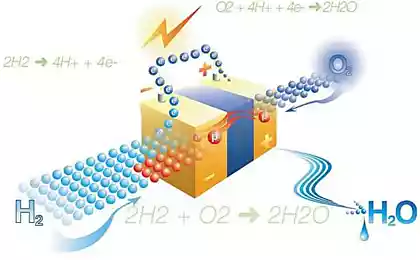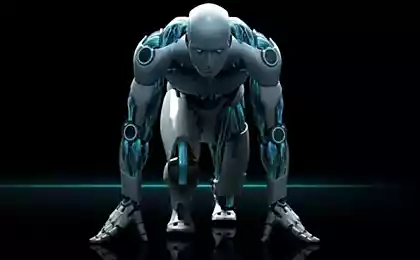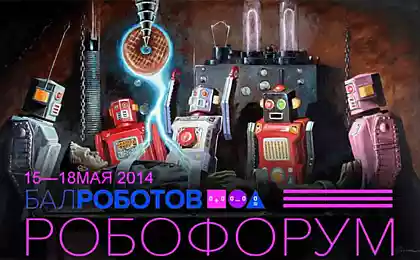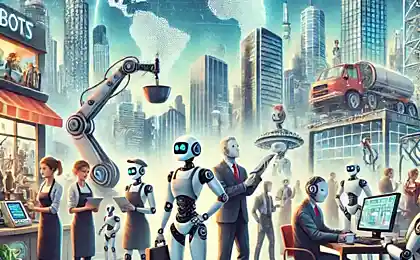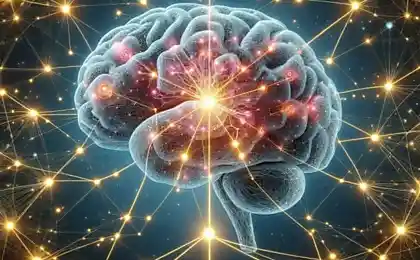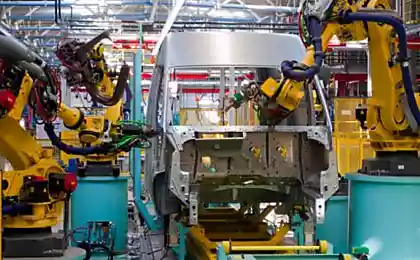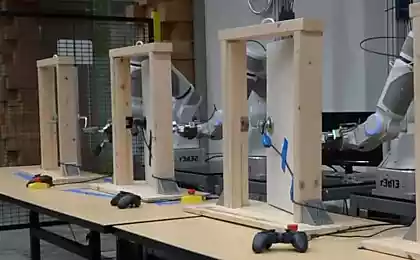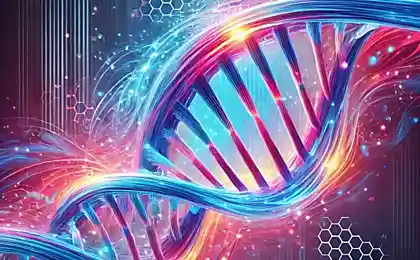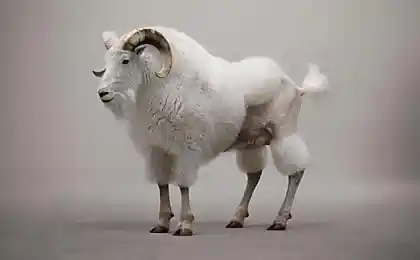In today's world of technology are indicators of progress. Not without risk, technological breakthroughs promise to solve the most pressing global issues of our time. Starting with cars that do not pollute the atmosphere and ending with chips that mimic the brain, a dozen technology this year, offers a glimpse into the future of innovation aimed at improving the lives of the transformation of industry and environmental protection.
1. Cars on fuel cells h4> We promised them long ago. They have many advantages over electrical and hydrocarbon machines. However, we only come close to the time when the industry is ready to produce them in a wide production. Initially, the price of cars will be in the region of $ 70,000, but should fall heavily to the increase of production over the next couple of years.
Unlike batteries, which must be recharged, fuel cells produce energy immediately. In practice, batteries and cells are combined, and the cells generate electricity that is stored in the battery to the point where it is needed the motor. Therefore, these hybrid cars can use the energy recovery during braking.
Such cars are similar to regular - they pass on one tank filling up to 650 km, and refilled three minutes. But when developing hydrogen output is only water vapor.
There are several ways to produce hydrogen, avoiding carbon emissions. For example, the electrolysis of water, which is produced using the energy from wind turbines and solar panels - although energy efficiency of this process is low. Also hydrogen can be obtained from water in high temperature nuclear reactors or minerals sources such as coal or natural gas, CO2 while catching and isolating it.
In addition to the lack of cheap hydrogen production on an industrial scale, the problem is the lack of infrastructure and its distribution. Currently, hydrogen transport over long distances is unprofitable. Soon, however, innovative methods of hydrogen storage (eg, organic liquids of low pressure) should reduce the cost of transportation and reduce the risks associated with the storage of hydrogen.
These cars look promising as a replacement for gasoline and diesel vehicles. But this requires a reliable and cost-effective production of hydrogen and spread it over a large area.
2. The next generation of robots h4> Mankind has long dreamed of a world where robots perform various daily activities. However, the future still can not come. Robots work mainly in manufacturing and other controlled tasks.
Development of technologies in robotics allows human-machine interaction. The robot body in flexibility and adaptability are becoming more similar to human bodies. Robots have more opportunities when using cloud computing, rather than to work autonomously.
From assembly plants robots moved, for example, farmers' fields, where automatic tractor work using GPS. In Japan, robots nurses help people with disabilities.
In fact, robots are ideal for repetitive or dangerous tasks, they can work without rest and their service is worth less than the salary of the person. But in the future, robots are unlikely to completely replace human - rather, they will be working with him. Despite all the advances in artificial intelligence, people will need to control the robot.
There are fears that robots can deprive people of work. But the experience of the previous AUTOMATION seen that as a result of increased productivity resulting in growth that was going to benefit the economy. However, the next generation of robots will raise new questions in various fields - philosophy, anthropology, and other aspects of the relationship between man and machines.
3. Thermosetting plastics (thermoset) h4> Plastics are divided into thermoplastics and thermosets. First when heated reversibly transformed into elastic and solid state. Of them do everything from toys to toilet seats. Since they are a refiner, they generally fall into the category of materials suitable for recycling. Thermosets can also form only once, after which the molecular structure is established, which allows them to withstand heavy loads and temperature.
Thanks to these characteristics, the latter are used in various fields, from mobile phones and printed circuit boards to the aerospace industry. However, these same characteristics make them unsuitable for recycling. As a result, they ended their lives at the dump.
In 2014 opened a new class of thermosets, which can be recycled. They are called Polyhexahydrotriazine, or PHT. They may be dissolved in acid, breaking the polymer chain, which can then be collected back.
Although none of recycling will not be 100% effective, industrial application of these polymers can lead to serious savings and reduce pollution. You can expect a replacement thermosetting plastics such in the next five years, and their use in almost all new products by 2025.
4. Technology for genetic manipulation h4> About the genetic modifications are constantly being debated. But new technologies will directly edit the genetic code of plants to give them different properties we need.
Now this technology is based on the ability of bacteria agrobacterium tumefaciens to transfer the desired DNA. In the scientific community all agree that such genetic engineering is no more dangerous than conventional breeding. But lately there have been more convenient technology.
This ZFN, TALENS and system CRISPR-Cas9 - bacterial defense mechanism against viruses. It utilizes an RNA molecule to modify the DNA. So you can turn off unnecessary gene or modify it indistinguishable from natural mutations way. This system also allows you to add new DNA sequences or entire genes.
Another technique - RNA interference in crops. It helps to combat fungi, viruses and parasites, thus reducing the required amount of pesticides. For more than ten years of viral genes used in Hawaii to protect from Popeye ringspot virus. This technology can protect wheat, rice, potatoes and bananas on their specific disease. Especially useful are these innovations will be for farmers operating small farms in developing countries.
5. 3D-printer h4> Historically, the production of any object is the process when the workpiece cut off from a large part of the superfluous. Today's technology can produce things on the contrary, gradually adding desired.
3D-printers enable you to provide things that are configured for the specific user, rather than identical objects of mass production. For example, the company manufactures Invisalign thus virtually invisible braces to correct teeth. Other companies involved in printing of cells or living tissue, skin, bones.
The next important step will be possible to manufacture printed circuit boards and integrated electronics. 4D-printers promise innovative products to adjust to the climate - clothes, shoes, or implants, adapts to the human body.
This technology destroys the established supply chains, but the possibility of its application is constantly growing. In the next decade is expected explosive growth and the emergence of new features and innovations in the technology.
6. The advent of artificial intelligence h4> Simply put, the AI - the science of using computer in those tasks that are available to people. Now most smartphones recognize speech and images. Robomobili and unmanned aircraft already being tested. Computer Watson defeated people in the intellectual game.
AI allows the computer to sense changes in the environment and respond to them. A new AI allows computers to achieve self-taught, processing large amounts of information. For example, the project NELL - Never-Ending Language Learning (infinite language learning) of Carnegie Mellon University. This system not only reads web pages and builds semantic links, but trying to improve the reading and understanding of these facts in order to in the future to do it better.
Like a robot future, the future of AI will deal with some problems better person. Robomobili reduce the number of accidents because the machine will not be prone to error and distraction. Intelligent processing system of the facts will issue forecasts and diagnoses better people.
Of course, the AI has its risks - for example, that once the AI decides to enslave people. Some experts perceive this risk seriously. In January 2015 they signed an open letter, which led the creation of the Institute of the future life in which they describe the potential problems associated with AI. Changes in the economy, associated with the introduction of intelligent computers could lead to an increase in social inequality and the disappearance of jobs. Drones replace couriers and robomobili - takistov.
On the other hand, the appearance of the AI will make a valuable human abilities such as creativity, emotions, relationships. Growth opportunities AI will raise issues related to the fact that the means - to be human, and increase the risks associated with, the difference between man and machine.
7. Distributed production h4> Traditional production collects raw materials and manufactures finished products in large factories. Then the finished products are distributed until it reaches the customer. When a distributed production of raw materials and manufacturing methods are decentralized production and the final product is made much closer to the customer.
The idea is to replace the supply chain of materials transfer of digital information. For the manufacture of a chair instead of wood production and rework it into chairs at the factory, could be transferred to the drawing of a chair on the local node where the items would be made by automatic milling machines. Going to the final blown in local shops or by the user. According to this scheme is already running at least one company in the United States - AtFAB.
Now about working on such a scheme enthusiasts with 3D-printers. When this is activated collective work of many people who can work together to improve the product.
Distributed production will allow more efficient use of resources and produce less waste. It also lowers the barriers to entry, reducing the need to leave the capital. More importantly, it should minimize the impact on the environment.
In the propagation of such an approach will disappear traditional labor markets. There are risks - will be more difficult to regulate and control what is done remotely - for example, there is a danger that it will be possible to produce everything from medical equipment to weapons. But not everything can be done in such a way, and traditional supply chain are not going anywhere.
Things such as cars or smart phones, will become less standardized. Already, the company Facit prints for customers at home on request. Production capabilities will evolve and adapt to markets and geographical features. In those places where supply now does not reach the standard method, will reach the blessings of civilization.
8. Drones h4> Drones recently took strong (and controversial) positions in the military. They are also used in agriculture, while shooting films and for various other purposes, which may come in handy for a cheap and extensive aerial surveillance. But as long as they are driven by people.
The next step - the emergence of automated drones. They will have to scan the environment and respond to changing parameters. In nature, birds, fish and insects can get in packs, where each member is very quick to respond to the motion of adjacent, resulting in a flock behaves as a single organism. It will be possible to emulate this behavior for drones.
These drones can perform tasks that are dangerous for people: checking power lines, special delivery of drugs. Drones shipper can build the shortest route and bypass other flying machines and obstacles.
In January 2014, Intel and Ascending Technologies showed prototypes of mini-drones that flew obstacles and people who are in their way. In fact, drones - a robot which does not operate in two and three dimensions.
Of course, to completely eliminate the risk in the event of flying machines can not. For ubiquitous machines drones must learn to work in difficult conditions: at night, in a blizzard or a dust storm. Unlike current mobile devices (which, in fact, is not mobile - we ourselves have to wear them!), Drones will be truly mobile and can fly wherever can not reach people.
9. Neuromorphic system h4> superkomyutery Even today can not compete with the human brain. They operate sequentially and transmitting data between the processor and the memory chips on the data bus. The brain has a plurality of internal links, where logic and memory connections billions of times greater than the computer. Neuromorphic chips are designed to process information in a completely different way than the current iron and mimic this human brain.
This next step in computing technology will bring a new level of machine learning and data processing. Chip IBM TrueNorth, containing millions of "neurons", the prototype of which was presented in August 2014, some problems may outstrip modern CPU hundreds of times.
With such chips drones can better handle data coming from the outside, there will be more smart cameras and smart phones, and data processing will help unlock the secrets of the financial markets and climate prediction. Computers can learn and predict, and not just to react programmed ways.
10. Digital genetics h4> The first transcript of 3.2 billion DNA base paired human genome took many years and cost millions. Now, your genome can decipher in minutes, and it will cost only a few hundred. The result can be written to the flash drive or send via the Internet.
Many diseases have genetic roots. A striking example is the cancer. Having the transcript genes doctors can prescribe the best treatment for the patient, taking into account the genetic characteristics of the tumor. This opportunity will bring and specialized medicine, which will be applied therapies, specialized for individual patients.
Of course, for reasons of privacy is necessary to protect information related to the human genome. But the benefits must outweigh the risks - personalized treatment can help in the fight against many diseases. due to genetic causes.
Source: geektimes.ru/post/246918/
